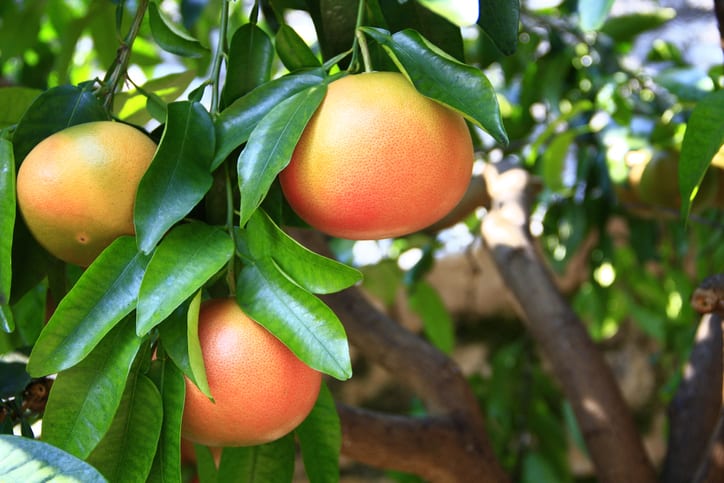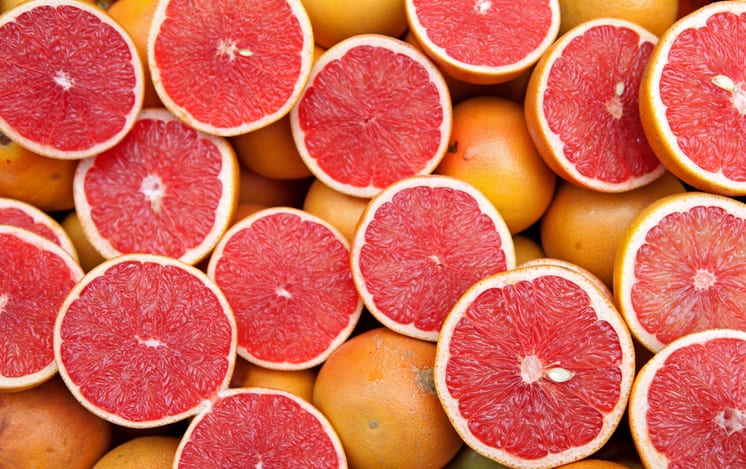Around these parts, we get stuck thinking that there are only about a dozen “normal” fruits because those are what are accessible to us. We grab bananas, apples, oranges, grapes, berries, melon – maybe a pineapple or a mango once in a while, or a kiwi, but that’s about as wild as we get.
There are some crazy fruits out there in the world, of course, but what if I told you the seemingly innocuous grapefruit was one of the weirdest?
To get there, we need to wander through some facts and history, so bear with me, ok?
Citrus fruits are native to warm, humid climates, and originally resided in those portions of Asia. Climate change pushed species like the citron, pomelo, and mandarin all over the world, and several others spread out over Asia.
The citron, pomelo, and mandarin are most important, though, because basically all citrus fruits are derived from them still to this day – sort of like the primary colors of citrus fruits.
Grapefruit, for its part, is a mix between a pomelo and a sweet orange (a hybrid of a pomelo and a mandarin). It was also not first found in Asia, but half a world away in Barbados sometime in the mid-1600s.
Europeans had planted citrus trees all over the West Indies and hybrids were appearing willy nilly. No one was documenting them at the time – what they originally planted or what later mixed with which – and no one was taking measures to avoid hybridizing, so it was happening all over the place.
The unintentional fruit that would become the grapefruit wasn’t even called by that name until the 1830s (that we know of), and was before that probably referred to as a “shaddock,” or the simple word for “pomelo” in the area.
Writer Griffith Hughes referred to a shaddock tree that grew a “golden orange,” or the “forbidden fruit” in 1750, and since the grapefruit was the most famous and popular citrus fruit in the West Indies, people imagine it was what he was talking about in his writings.
Some researchers believe a “golden orange” was indeed a grapefruit, but that the “forbidden fruit” was some other hybrid that has since been lost to time.
The name grapefruit is also up for debate, with some believing it harkens back to a 1664 Dutch physician describing the citrus in Barbados as “tasting like unripe grapes” while others point to John Lunan, an 1814 plantation owner from Jamaica, saying the fruit was named “on account of its resemblance in flavour to the grape.”
It’s important to note that grapes as we know them didn’t exist there until the 18th or 19th century – before that they only had sea grapes, which aren’t grapes at all but a kind of buckwheat, and are sour and slightly bitter (just like a grapefruit).
The grapefruit made its way to America in the 1820s, when Frenchman Odet Philippe hopped over to Pinellas County, Florida. He loved the grapefruit and planted huge swaths of it, even gifting grafts to his new Native American neighbors so they could grow it, too.
Then another grapefruit devotee, Kimball Chase Atwood, moved to Tampa bay and planted his own grove of trees – around 16,000 of them, to be exact.
Grapefruits would rather not be contained or cultivated, though, and turned pink all on their own – Atwood patented the Ruby Red grapefruit in 1929, making a fortune even though the fruit had hybridized itself in the wilderness.
Image Credit: iStock
Which is all very interesting, but the innovating breeding properties doesn’t necessarily qualify the fruit as weird.
What clinical pharmacology researcher David Bailey found in his lab in 1989, though, definitely does – because what he discovered is that grapefruit is one of the greatest foes of modern medicine (when it comes to adversarial foods).
“The hard part about it was that most people didn’t believe our data, because it was so unexpected. A food had never been shown to produce a drug interaction like this, as large as this, ever.”
The post This is Why the Grapefruit Is One of the World’s Weirdest Fruits appeared first on UberFacts.



